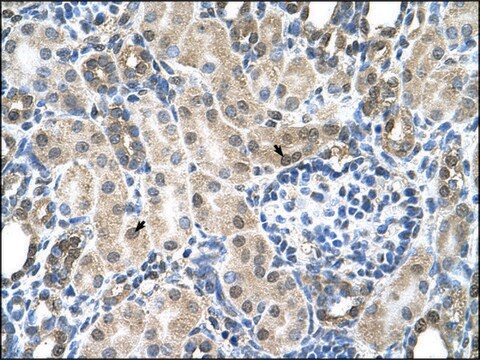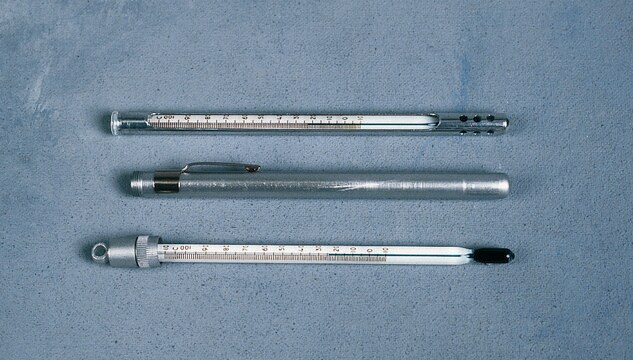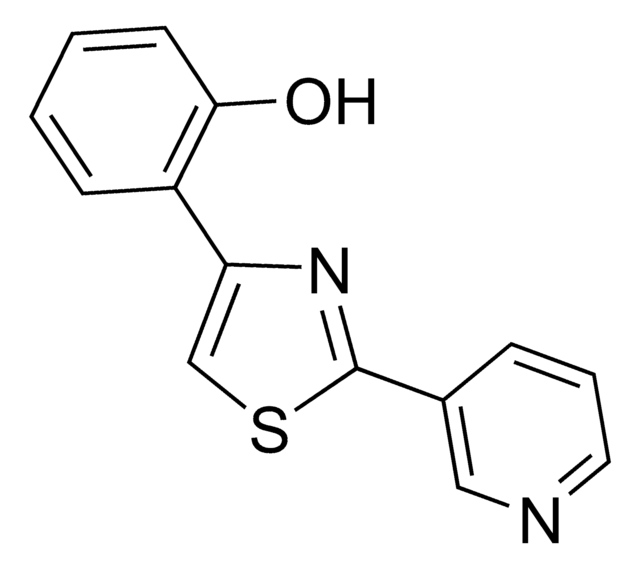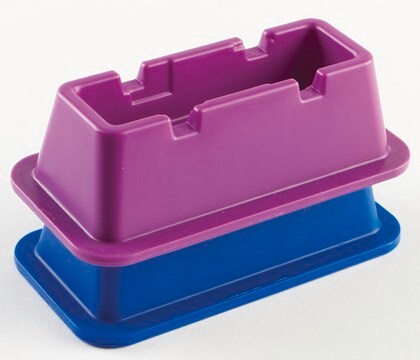Recommended Products
biological source
mouse
Quality Level
conjugate
unconjugated
antibody form
purified antibody
antibody product type
primary antibodies
clone
6, monoclonal
mol wt
calculated mol wt 128.26 kDa
observed mol wt ~140 kDa
species reactivity
human, rat
packaging
antibody small pack of 100 μL
technique(s)
western blot: suitable
isotype
IgG1κ
UniProt accession no.
shipped in
dry ice
storage temp.
2-8°C
target post-translational modification
unmodified
Gene Information
human ... RFC1(5981)
General description
Specificity
Immunogen
Application
Evaluated by Western Blotting in HepG2 cell lysates.
Western Blotting Analysis (WB): A 1:500 dilution of this antibody detected Replication factor C subunit 1 (RFC1) in HepG2 cell lysates.
Tested Applications
Western Blotting Analysis: A representative lot detected RFC1 in Western Blotting applications (Farina, A., et. al. (2008). J Biol Chem. 283(30):20925-36).
Note: Actual optimal working dilutions must be determined by end user as specimens, and experimental conditions may vary with the end user
Physical form
Storage and Stability
Other Notes
Disclaimer
Not finding the right product?
Try our Product Selector Tool.
Storage Class Code
12 - Non Combustible Liquids
WGK
WGK 1
Flash Point(F)
Not applicable
Flash Point(C)
Not applicable
Regulatory Listings
Regulatory Listings are mainly provided for chemical products. Only limited information can be provided here for non-chemical products. No entry means none of the components are listed. It is the user’s obligation to ensure the safe and legal use of the product.
JAN Code
MABE1893-25UL:
MABE1893-100UL:
Certificates of Analysis (COA)
Search for Certificates of Analysis (COA) by entering the products Lot/Batch Number. Lot and Batch Numbers can be found on a product’s label following the words ‘Lot’ or ‘Batch’.
Already Own This Product?
Find documentation for the products that you have recently purchased in the Document Library.
Our team of scientists has experience in all areas of research including Life Science, Material Science, Chemical Synthesis, Chromatography, Analytical and many others.
Contact Technical Service








![des-Arg9-[Leu8]-Bradykinin acetate salt ≥97% (HPLC)](/deepweb/assets/sigmaaldrich/product/structures/349/954/df5fe325-b9df-4769-80d8-10a3c754de46/640/df5fe325-b9df-4769-80d8-10a3c754de46.png)